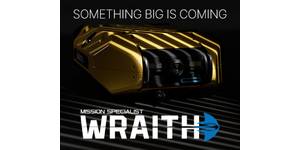Marine Technology Reporter Blogs - arctic
Future Trends – Automated Drilling

Some interesting trends are developing within the O & G industry, one of which is the trend towards increasingly automated drilling. Since the early stages of onshore and offshore drilling, the act of drilling itself has been undertaken as a hands-on job by specialized workers, along the last decade this has begun to change with the introduction of autonomous computer-controlled drilling operations, also known as drilling automation. Oil and Gas operators are developing technologies which they hope will allow drilling operations to be automated, consequently meeting their safety goal of zero people hurt on the job and also reducing drilling operation costs.
Autosub6000 – UK’s Deepwater AUV

With a range up to 1000 km, a maximum operating depth of 6000 m, and a payload capacity of 0.5 m3, Autosub6000 is one of the world’s most capable ultra-deep water AUVs. The Autosub6000 was developed by the Underwater Systems Laboratory at the National Oceanography Center in Southampton, with funding from the UK Natural Environment Research Council. Autosub6000 is the latest 6000 m rated version of the Autosub AUV series, which has been used extensively for ocean science during the last 10 years, including work under ice operations in the Arctic and Antarctic. The design of the nose and tail sections, including the navigation and control systems, are substantially inherited from the tried and tested Autosub3.
The Prirazlomnaya Rig Details – Part 2

The Prirazlomnaya platform was designed for operation in the most hostile climate with sub-zero temperatures and a solid ice cover that remains for nearly six months in the production area, where up to 22 storms take place every year. An average storm may last for 9.5 days with an average wave height of 3.9 meters and the maximum wave height reaching 13+ meters. It is designed to resists ice pressure, sea waves and earthquake magnitudes from 5 to 6 on the Richter scale. Built by Sevmash Production Association, the Prirazlomnaya offshore ice-resistant oil-producing platform (OIRFP) is a key development facility. The platform will ensure well drilling, oil production, storage and offloading.
The Prirazlomnaya Rig Details – Part1

Arctic O&G exploration has been under the spotlight for some time now, with environmentalists clamoring for a moratorium on Arctic drilling and O&G production, due to concerns of operational safety and unpreparedness of operators to deal with oil spills in the harsh and icy Arctic environment. This has led Shell and other operators to postpone their Arctic activities in order to reassess their safety measures. Russia however has decided to continue with their Arctic exploration plans, and after some delays, Gazprom has started producing oil from the Prirazlomnoye field. It is the first Russian project for developing the Arctic shelf and launches Gazprom's large-scale activities aimed at creating a large hydrocarbon production center in the region.
Wave Glider Capabilities and Uses

The Wave Glider is the first unmanned autonomous surface vehicle (ASV) to use wave energy for propulsion. Its ability to stay out at sea gathering data for long periods of time, through all weather conditions, and communicate real-time data from the surface of the ocean, assures it has a wide array of uses both for academia and for the offshore industry. First introduced in 2009, Wave Gliders have since traveled more than 300,000 nautical miles, set a world record for longest distance traveled by an autonomous vehicle, and been deployed on more than 100 customer missions ranging from the Canary Islands and the UK in the Atlantic Ocean to Australia in the Pacific Ocean to the Arctic.
SeaBED-class AUVs – The Deepwater Imager

The SeaBED AUV, developed by WHOI scientist Hanumant Singh and colleagues, is an AUV that can fly slowly or hover over the seafloor to depths of 6,000 feet (2,000 meters), making it particularly suited to collect highly detailed sonar and optical images of the seafloor. SeaBED flies about 8 feet (2.5 meters) above the seafloor, flashing its strobe light and snapping a photo every three seconds. It maintains a constant altitude and speed of a ½ knot. Over the last seven years SeaBED-class AUVs have shown their versatility on missions ranging from shallow coral reef surveys to searches for deep-sea hydrothermal vents, in environments ranging from the open ocean to the dense ice cover of the Arctic.
Asymmetrical Icebreaker - Arctic Multipurpose Vessel

A new asymmetrical design for Arctic icebreakers is capable of opening larger paths for other ships to navigate in the harsh Arctic winter, this oblique icebreaker, NB 508, is being built by Finish shipbuilder Arctech in Helsinki. This icebreaker drifts sideways allowing it to cut a channel as much as 30% wider than channels made by conventional icebreakers that hit the ice head-on. The €76 million ($103 million) ship has been designed with an asymmetrical hull that inclines steeply and is heavily reinforced on its left side, to bear the brunt of the icebreaking. Although the ship can go faster in open water or while icebreaking head-on…
Subsea Processing Systems Expanding in Brazil

The advent of reliable subsea processing has taken a considerable time to develop. For a few years now, it has been looked at as a vital solution for deepwater O&G development. Subsea processing technology was first developed to overcome challenges posed by extremely deep wells but in time it has become a proven solution in mature fields by decreasing the amount of equipment on the surface, therefore lowering operational costs and of course by boost diminishing production from mature wells, normally through re-injection of fluids, such as water, into the wells to increase the pressure inside the well. It is also an important solution in locations where harsh surface weather conditions make it extremely risky to have an anchored production plant.

 December 2025
December 2025



